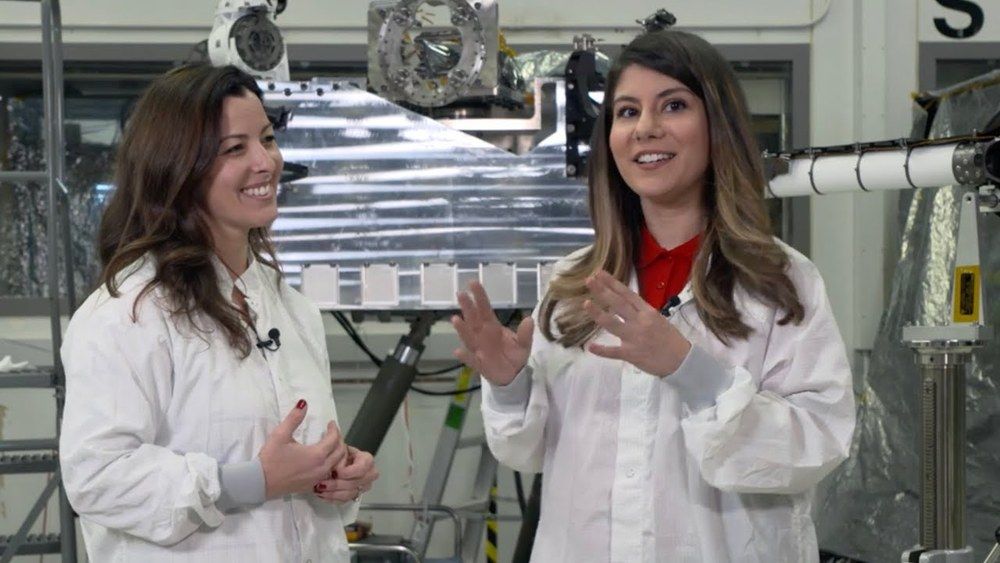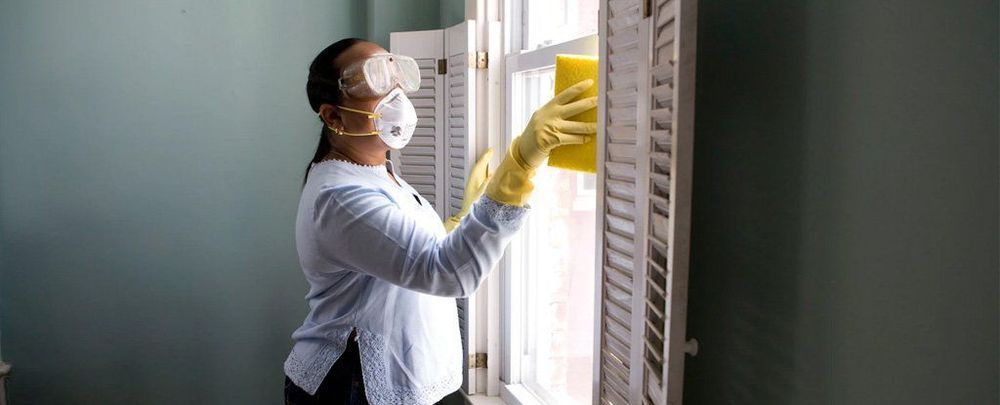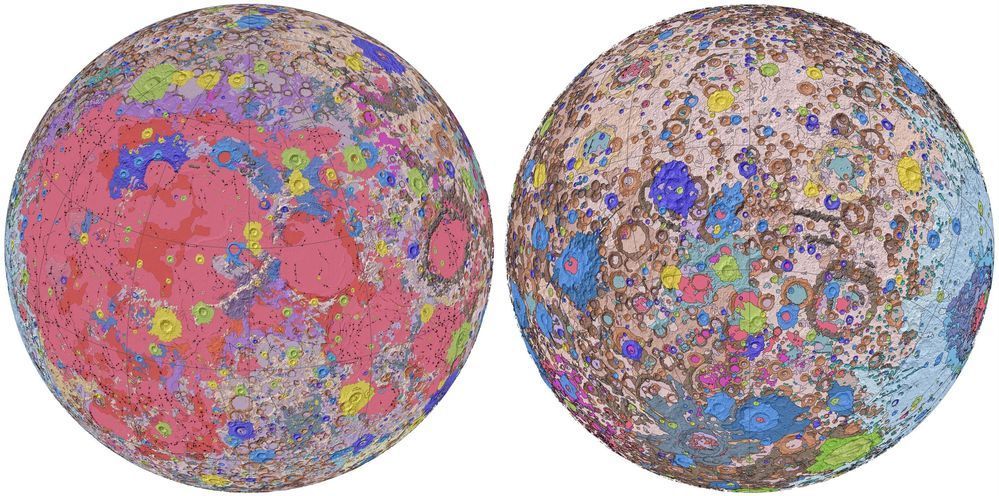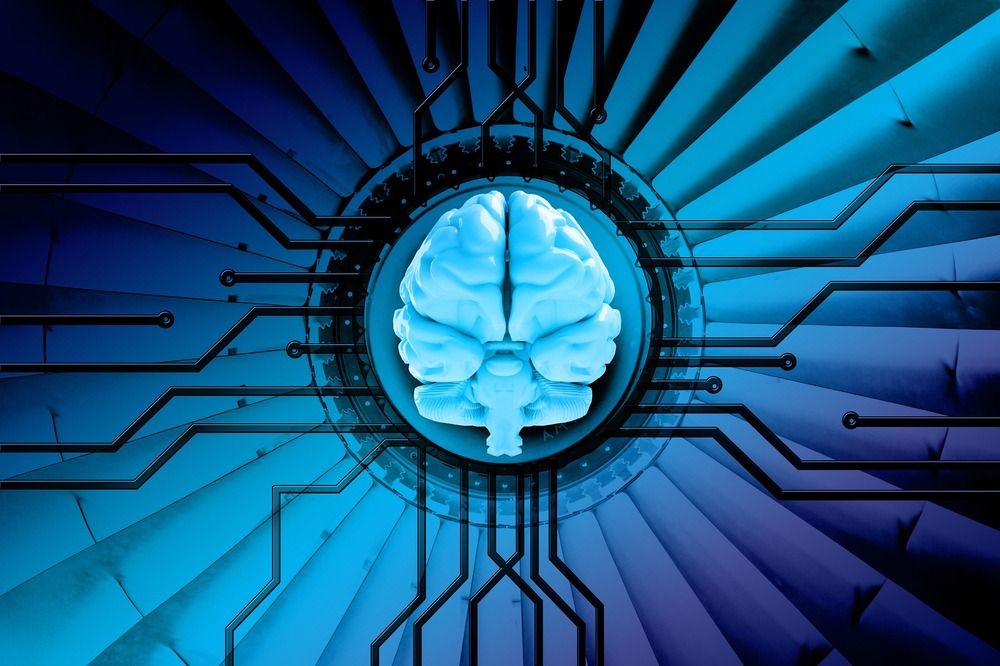Page 6785
Apr 23, 2020
S1 Smart Lock unlocks through fingerprints, NFC, passcodes or app
Posted by Genevieve Klien in categories: internet, mobile phones
Who knew there were so many “smart” ways to unlock a lock? For years companies have been trying to get people to use their phones or keypads or fobs, and now a new startup called Yeeuu Tech has thrown a bunch of methods into one device. The S1 Smart Lock packs eight different unlocking methods, and it can be fitted into most existing locks.
The S1 takes the place of an existing door handle and lock barrel. To unlock it, users can scan their fingerprint, punch in a passcode, use the app via Wi-Fi or Bluetooth, use a device with NFC, tap an included custom “badge”, give a voice command through an assistant, or use an old-fashioned mechanical key.
The fingerprint sensor is located on the top in easy thumb reach, and can apparently be read in under half a second. The system can store up to 50 different fingerprints.
Apr 23, 2020
SpaceX’s Starlink network surpasses 400-satellite mark after successful launch
Posted by Alberto Lao in categories: futurism, satellites

After years of studies, test-firings and a survey of U.S. industry in preparation for launch of a Mars Sample Return mission in 2026, NASA has settled on a solid-fueled design for a miniature rocket with a first-of-its-kind purpose: Launching a payload from Mars for a trip back to Earth.
The small launcher is called a Mars Ascent Vehicle, or MAV. The MAV will play a key role in the Mars Sample Return mission being developed by NASA and the European Space Agency.
Continue reading “SpaceX’s Starlink network surpasses 400-satellite mark after successful launch” »
The first EU permits for insects as a “novel food” should be issued in mid-2020. This will end the legal uncertainty about breeding insects for human consumption in Europe. Now is the time to draw lessons from Belgium, which has served as a sandbox for the fledgling industry, about its future prospects. Are we really ready to eat insects?
Romy is an adorable little blond girl who, like all children under the age of 2½ in Belgium, goes to the crèche most weekdays. Her parents spend 20 minutes every evening preparing her lunch, carefully weighing out some carbs, freshly cooked vegetables, a protein-rich ingredient, some high-quality fat and a sprinkling of chopped herbs. It’s the recommended diet for a child her age. But unlike most of Belgium’s children, Romy gets a meal that eventually includes a teaspoon of cricket powder. In fact, she even loves to snack on some whole locusts from time to time. All this thanks to Belgian’s progressive regulatory system, which allowed a whole new sector in the Western agrifood landscape to open up here a few years ago.
In theory, Romy is well on track to help fulfil the prediction, or rather prescription, of the Food and Agriculture Organisation (FAO) for insects to become “a high-value source of animal protein for the rapidly growing world population.” But the challenges ahead are huge and Belgium, as a test ground, has gained some valuable experience. Along with a few other countries in Europe, Belgium has taken a bite at insects. But sometimes it hurts.
Apr 22, 2020
Cleaning Products Can Kill The COVID-19 Virus. Here’s What to Use in Your House
Posted by Quinn Sena in category: biotech/medical
COVID-19 has only been around for a few months, so at this point scientists don’t know that much about it. But more is being learned every day.
We now know, for example, it can live on surfaces for up to nine days and survives in the air for a few hours. We also now know that the virus particles are shed through saliva and fluids coughed up from the lungs. And that the virus can also be shed from our faeces.
It’s easy for an infected person to spread the virus particles through coughing, touching other people or leaving the virus on surfaces.
Apr 22, 2020
USGS releases first-ever comprehensive geologic map of the Moon
Posted by Fyodor Rouge in category: space
👽 Moon Map
Fyodor R.
Have you ever wondered what kind of rocks make up those bright and dark splotches on the moon? Well, the USGS has just released a new authoritative map to help explain the 4.5-billion-year-old history of our nearest neighbor in space.
Apr 22, 2020
A new kind of memristors may hold the key for the breakthrough of future brain computer interface
Posted by Neurozo Huang in categories: biological, computing, nanotechnology
In a paper published on Nature Communications in 20 April 2020 by (read the original paper), Tianda Fu et al. from the University of Massachusetts Amherst proposed a new kind of diffusive memristor based on the protein nanowires sourced from the bacterium named Geobacter sulfurreducens that can potentially resolve the problem. The artificial neurons built on such memristors can function on the level of biological voltages, and they express “temporary integration feature that is similar to real neurons in our brain” according to the authors.
Apr 22, 2020
New California study shows $1 billion silver lining due to coronavirus shelter-in-place orders
Posted by Quinn Sena in categories: biotech/medical, health
:ooooo.
At the beginning of March, Democratic Gov. Gavin Newsom of California announced a series of executive orders he hoped would help slow the spread, and subsequently mitigate the health impact, of COVID-19. One of those orders told Golden State residents to shelter-in-place. This order, set for two weeks, has been extended until May. Gov. Newsom has subsequently told residents that the process through which these public health safety measures will be loosened up is going to be deliberate, and done by degrees.
A study out of UC Davis in California says there is one silver lining to the shelter-in-place orders, though. According to researchers, the California highway patrol—who on average respond to more than 2,000 roadway “incidents” per day—have reported an enormous reduction in the daily rate of collisions. This means a lot less death and injury and a lot of public money saved.
Apr 22, 2020
Investing In Renewable Energy Could See A Return Of To Up To 800%
Posted by Quinn Sena in categories: biotech/medical, economics, employment, sustainability
The economic impact of the coronavirus pandemic has governments struggling with how to restart a global economy that has come to a grinding halt. Some short term needs have to be addressed as soon as possible — avoiding starvation, extending unemployment benefits, and arranging for emergency healthcare for those infected. But even as the world faces such daunting tasks, decisions made today will have enormous consequences for the future. While the emergency today is great, a much bigger emergency waits just around the corner as the Earth continues to overheat.
Governments in thrall to fossil fuel interests, such as the United States, see the virus as a chance to roll back advances in renewable energy. After all, the oil and gas industries provide for 10,000,000 jobs around the world. Surely those jobs must be protected, right?
Apr 22, 2020
Quantum Communication Could Make U.S. Subs Even More Deadly
Posted by Quinn Sena in categories: nuclear weapons, quantum physics
University researchers have discovered that quantum communications are possible with submerged objects in turbulent water. The revelation means it might someday be possible for the National Command Authority to use quantum communications to securely communicate with underwater submarines, particularly those that make up part of the nuclear triad.

















